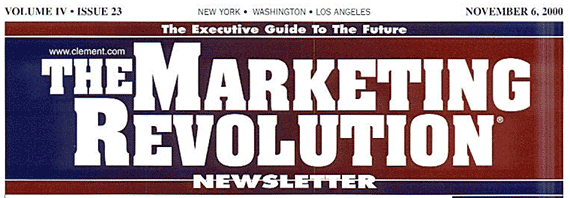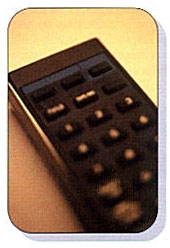
Entrepreneur Finds The Right Path For Marketing His Gadget |
||
|
While scrambling to find the remote control for his television one day, Craig Nabat realized that the world needed a device that could help people find the personal articles they lose most often. Common everyday forgetfulness, he felt, is a human trait that besets every consumer on earth at some time or another. So at the age of 19, Nabat secured the capital for hiring engineers to help him develop a computer chip that responds to the sound of three claps. When a prototype was created, he gave FINDIT a registered trademark and launched Ambitious Ideas Inc. Now, 10 years later, Nabat remains incredulous over the backward approach he took when he first began marketing his domino-sized device. The product, which attaches to items as small as key chains and beeps when activated, required an initial $66,000 investment for 10,000 units. But in his eagerness to introduce FINDIT to the public, Nabat sunk an additional $35,000 into a one-minute infomercial that hit the airwaves before he received his first product shipment. The effort was further botched when the initial product order came tainted with faulty technology, missing logos and imperfect designs. "I was stuck with thousands of units that I would not have sold to my worst enemy," he quips. Thus, the television commercial was immediately pulled off the air and Nabat ended up donating the flawed products to a school for science and art projects. "It was a marketing plan that went from Z to A, rather than A to Z," he admits. A Second Chance At SuccessDespite his initial mistrials, Nabat maintained his belief in the product and spent two years searching for new engineers who could design the microchip properly. This time, the product was backed by a team of accomplished professionals who had experience in developing microchips for guided missile systems for the U.S. Nabat was also intent on outsourcing all aspects of the operation so that he could focus freely on exploring the marketing power of electronic media. He enlisted a bevy of supporters, including a Web site designer, a phone sales center to take orders, and a fulfillment house to ship the merchandise. "A lot of people who get into direct mail order industries don't understand that you shouldn't spend all of your money on the infrastructure. Instead, you should devote it to the marketing and advertising of your product. Outsourcing is much cheaper and allows you to preserve your marketing and ad budget," says Nabat. The Road To HollywoodThe money that Nabat saved dodging the expenses of employee payrolls, telephone lines and shipping materials has been partly used for hiring a Hollywood product placement company in Los Angeles. The agency supplies film producers with products that add a believable essence to their movie sets. Nabat says retainers for such agencies can cost up to $60,000 per year, although he is thrilled over the results so far. In an upcoming movie starring Sylvester Stallone called "Champs," a 40-foot FINDIT banner will grace an auto racetrack in one scene. And in another soon-to-be-released film with Jack Nicholson, called "The Pledge," moviegoers will get a glimpse of a 5-foot cardboard cut-out that depicts Nabat himself jumping over an oversized FINDIT. "Move producers display all sorts of products in their scenes and they must seek the rights to use them. This s a good way of getting your brand name on the big screen," says Nabat. Cost-Effective InfomercialsSince overcoming his original ill-fated attempt at television advertising, Nabat has re-edited the two-minute infomercial that airs under a less expensive guise compared to the high cost of "spot buying." Though an agency that works with television networks called Per Inquiry Advertising, Nabat obtains media time with no up-front investment but he surrenders 40 percent of sales made from each infomercial to the broker. Another provision is that the commercial is pegged into unsold time slots on stations from which Nabat cannot pick and choose. His only initial investment stems from production costs and re-editing. Per Inquiry Advertising, however, requires that companies display strong sales records before marketers qualify for "remnant" airtime. "This is a way to just get your foot in the door and prove that there is life to the product," says Nabat. "But you don't necessarily get the repetition you need to hit the mass market." Nabat hopes that his alternative approach to infomercial marketing might eventually lead to a joint venture with a major direct marketing company. Such companies typically partner with merchants whom they believe can sell in large volume with increased media time. "There's only about 17 of them in the US that invest in infomercial time, and you have to have a well-proven track record to be considered." The QVC SpotlightIt seems that more than a few people had lost their television remotes the day FINDIT made its debut on the QVC Shopping Network last year. In only seven minutes, Nabat sold 859 units for $19.95 apiece. "It proved to myself and the people I'm working with that there is definitely a need for this product," says Nabat. Securing a spot on the network, however, is not an easy task. Nabat was originally turned down when he pitched the product himself. It wasn't until after he hired a broker that QVC tool notice. "You need to find people who have personal relationships with buyers of that network," says Nabat. "My advice is to find qualified brokers - ones who specialize in the direct response industry, as opposed to traditional media buyers." Nabat was recently invited back on the network for a second time, providing him with a six-minute spot. "I'd certainly like to hear from them again, but I'll just have to wait and see what happens." |
||
|
||
|
Close this window to return to the FINDIT Web site |
||
 Most
of us clap in relief upon finding a lost personal belonging. But
the inventor of FINDIT suggests clapping before the search to immediately
locate those mislaid medicine bottles, eye glasses, keys purses
or wallets.
Most
of us clap in relief upon finding a lost personal belonging. But
the inventor of FINDIT suggests clapping before the search to immediately
locate those mislaid medicine bottles, eye glasses, keys purses
or wallets.